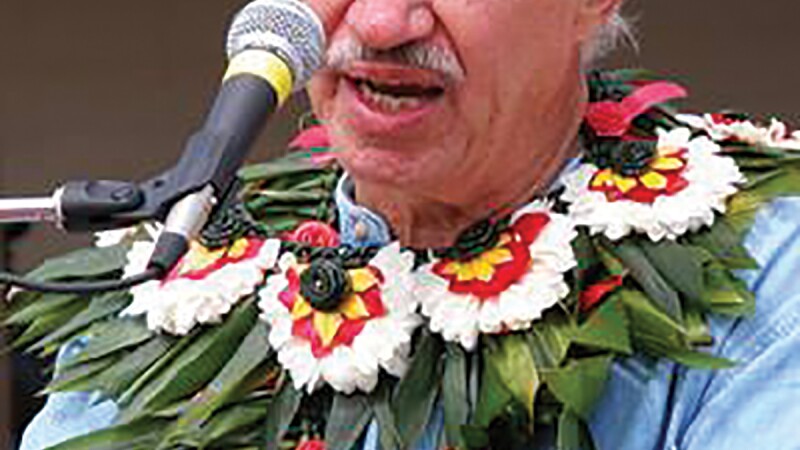Sculptor and BYU-Hawaii professor of 21 years Jan Gordon Fisher passed away July 20, 2016, leaving a legacy of artwork all around the islands. BYUH students and faculty said they remember him as a genuine artist and friend. Arguably, his most famous piece is the 9-foot bronze Duke Kahanamoku statue in downtown Waikiki, which he finished in 1990. The sculpture is seen by millions of people from all over the world. BYUH Japanese Professor Katsuhiro Kajiyama said of Fisher,, ““He is a pure artist. He thinks of everything in an aesthetic way. If it is art, he always discusses it, and the discussion prolongs, and gives a more critical opinion… I loved him, because he was such a person.” Talking about some of Fisher’s artwork in Maui that she and her family saw, Brandi Mayes said in a Facebook post about Fisher’s work, “Remarkable! Gifted doesn’t even describe the works we’ve seen!” Fisher’s bronze sculptures in Maui are all around the Grand Wailea Hotel. The sculptures include a spear fisherman, a mermaid, and trios of male and also female hula dancers. Sherry McNabb-Holman wrote in a Facebook post, “I have never seen such lifelike sculptures before. What beautiful works of art he created. So sorry to hear of his passing. I can see he will be missed by so many, but he will live on through his beautiful artwork. The great thing about those sculptures is that people will get to see them and enjoy them on a daily basis for the first time in so many instances. And they will be amazed as I was.” Fisher also made the sculpture of Ma Manuhi‘i, the Hawaiian woman who took the teenage Joseph F. Smith under her wing while he was on his mission in the Hawaiian Islands. The statue rests beside the Laie Hawaii Temple grounds. Fisher confided in Kajiyama about a special experience he had when preparing to make the bronze sculpture of Manuhi‘i, said Kajiyama. When Fisher was pondering how to make the statue of the woman he couldn’t find any photos of her, and he didn’t want to make a generic Hawaiian face, said Kajiyama. So, he went with a prayerful heart to the temple. “A miracle happened,” related Kajiyama, as Fisher had told him. “He saw her fingers in the temple, then her face and whole body. ‘I was so inspired,’ he told me, almost in tears, and he started the statue.” Kajiyama said he and Fisher were close friends as they worked together as teachers at BYUH. “I was teaching art at that time. Exchanging ideas it was so much fun.” One of Fisher’s students, LeRoy Transfield, made two bronze sculptures at the Polynesian Cultural Center. One is a statue of Joseph Kekuku, inventor of the steel guitar, and the other is Hamana Kalili, who made the shaka sign famous. Transfield wrote on Facebook, “Jan was my teacher and a good friend. I often think of him. Sometimes in appreciation, sometimes to curse him :) but never a dull moment with that crazy guy. The longer I live the more I understand and appreciate him, his contradictions, crazy experiences and his unselfish generosity.” Another student, Douglas Larsen, wrote on Facebook about Fisher: “I remember working on a sculpture after class and talking about my brother suffering from addictions and bad friends, and wishing I could bring him to Hawaii. Jan Fisher handed me his credit card and said, ‘That’s a worthy cause. Go buy him a ticket and get him here.’ That probably saved my brother’s life. My brother is doing great 25 years later.” “Jan Gordon Fisher was born in 1938 in Westwood, Calif. He attended Brigham Young University on an art scholarship where he received a bachelor’s of Fine Arts degree. He continued his education at Mills College in Oakland, Calif., where he studied with the famous master, Antonio Prieto. His bronzes have won many awards and he was a member of the National Sculpture Society since 1991,” according to FineArt360.com
Writer: Samone Yuen

